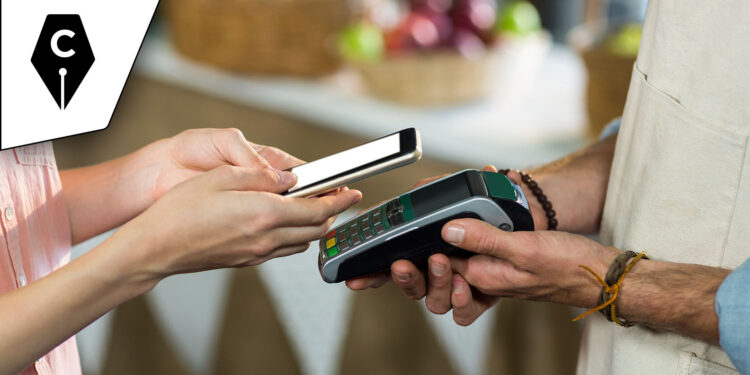Current payments models are about 10 years behind the technological ability to implement. An article published in Wired online two years ago asked rhetorically, “Shouldn’t we have seamless micropayments by now?”
 The article points out that a “402 Payment Required” error was planned for by early World Wide Web developers but currently sits on a digital shelf collecting dust. Sadly, web standards organization W3C has closed its paged labeled Ecommerce/Micropayments Activity. That doesn’t mean, however, that all micropayments development for the web has ceased. There are still some interesting projects happening in this space.
The article points out that a “402 Payment Required” error was planned for by early World Wide Web developers but currently sits on a digital shelf collecting dust. Sadly, web standards organization W3C has closed its paged labeled Ecommerce/Micropayments Activity. That doesn’t mean, however, that all micropayments development for the web has ceased. There are still some interesting projects happening in this space.
PayPal has a micropayments service for sellers of digital products. One enterprising web development company has a micropayments plugin for WordPress, though I’d be loathe to use it without delving deep into its security protocols. And last week, I talked about Coil.
Despite the great strides micropayments have made in recent years, I think there’s still room for improvement. Keep reading to see where micropayments has the potential to grow.
5 Practical Micropayment Implementations That Are Possible Today
Below are five ways I believe micropayments could change the internet for the better, and we have the ability to implement these protocols right now.
- Filter email spam – Adam Back, an early pioneer in proof-of-work, created Hashcash as a way to fight email spam. Unwittingly, bitcoin’s creator Satoshi Nakamoto adopted Back’s system for the world’s first blockchain. Back’s thesis still remains. If sending an email message cost a small fee, spammers would quickly lose motivation to send hundreds of emails in a single blast. I’d like to see digital wallets interoperable with email addresses allowing email account holders the ability to set the fee for the privilege of sending them email. If you trust the sender, you could set the fee to zero. For those people you know but aren’t warmed up to enough yet, you could set a small fee. And for cold relationships, or no relationship all, you could set a higher fee. Owners of email addresses should be allowed to set their own privacy and security preferences.
- Opt out of email lists – What if, instead of filling out a form to download a lead magnet, a website visitor opted to pay a small fee instead? As a journalist, I frequently encounter gated information that would be valuable in my research, but I don’t want to end up on a thousand different mailing lists, and it’s cumbersome to create a fake email account every time I want to send spam into the ether or log in to my honeypot account just to click a confirmation link for email I’ll never read anyway.
- Independent artist downloads – Imagine discovering a new music artist, moviemaker, or book author and wanting to experience more of their work. Instead of being forced to interact with Netflix, Amazon, or Spotify, each artist could have a website where fans can stream their music or movies or buy their books using a peer-to-peer micropayments service using the digital currency of choice for both parties.
- Saving and investing – Savings app Acorns allows investors to invest small amounts of money ($1 to $5) at a time. Users can invest in stocks even while they shop, sending spare change to the app. There is plenty of room for competition in the microinvestment space.
- Publishing – I understand that online newspapers and publishers want to make money from their content, and advertising is nearly dead. But why should readers be forced into a monthly recurring contract when they may just want to read just one article? Charge me for one article. Publishers could make more money in the long run.
Micropayments Can Be Made in Cryptocurrency or Fiat Money
Micropayments are typically defined as anything less than $10. With the advent of cryptocurrencies, micropayments can be less than $1. Credit card companies charge fees for every payment. Under the current financial system, it doesn’t make sense to use a credit card for payments that small. The processing fee could be more than the payment! Cryptocurrencies, however, make micropayments not only feasible but highly desirable. Isn’t it time we devise a microfinance system that caters to the small transactions people naturally conduct multiple times a day?
DISCLAIMER
I am not a financial advisor, nor do I give financial advice. The above information should not be considered financial advice but is for informational purposes only. Neither I nor Cryptowriter are responsible for financial losses incurred as a result of acting on this information. Please consult a financial advisor before making any financial decisions.
This post is published for Cryptowriter in association with Voice.
If you enjoyed this content feel free to use our EXCLUSIVE SIGN UP PAGE to skip the queue and gain full access to our Cryptowriter community.
Follow Our Socials – Twitter– Telegram– Instagram
Follow Me
- Cryptocracy Newsletter: https://cryptocracy.substack.com/
- Cryptocracy on Twitter: https://twitter.com/Cryptocracy3
- Allen Taylor Twitter: https://twitter.com/allen_taylor
- Taylored Content: https://tayloredcontent.com
- Cryptobloggers: https://cryptobloggers.us
This post originally appeared at Voice.